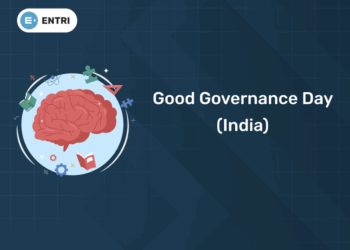Buffer zones are designated areas used to protect sensitive landscape patches (e.g., wetlands, wildlife reserves) from adverse external pressures. Buffer zones offer critical habitat near to streams and wetlands, as well as help in controlling erosion, especially on unstable steep slopes. Buffers along streams and other water bodies also offer wildlife corridors, a protected area where wildlife can move from one place to another.
The Union Ministry of Environment, Forest and Climate Change has eased the steps for environmental clearances of developmental activities in the buffer zone. An office memorandum (OM) on August 8, 2019, published on the environment ministry website, said that projects outside the boundary of the notified eco-sensitive zone (ESZ) of a sanctuary or national park but within 10 km radius of the park will not require advance permission from the National Board for Wildlife (NBWL).
Such proposals will now get environmental permission from the ministry’s expert appraisal committee (EAC), which will assure “appropriate conservation measures in the form of recommendations will be made,” the memorandum said. It cancels former OMs dated February 27, 2007 and December 2, 2009, which made the NBWL’s approval compulsory for projects within a 10 km radius of the park.
Grab Latest Study Materials! Register Here!
Projects located within the notified ESZ will require the NBWL’s nod, which can be applied for together with the primary “terms of reference” application. Mining will be forbidden within the notified ESZ or within only one km from the boundary of the park, whichever is more according to the new OM.
- Buffer Zone is an area supposed to strengthen conservation of protected area. This move is likely to diminish the protection provided to wildlife sanctuaries and national parks.
- As per an office memorandum (OM), the projects outside the boundary of the notified Eco-Sensitive Zone (ESZ) of a sanctuary or national park but within 10 km radius of the park will not require advance permission from the National Board for Wildlife (NBWL).
- The Wildlife Conservation Strategy of 2002 suggests a buffer of 10 km around sanctuaries.
- ESZ are made to serve as “shock absorber” for protected areas. The basic object here is to manage certain activities around national parks and wildlife sanctuaries to reduce negative impact on the delicate ecosystem around.
- Such proposals will now get environmental clearance from the ministry’s Expert Appraisal Committee (EAC), which will assure “suitable conservation measures in the form of recommendations”.
- Projects within the notified ESZ will need the NBWL’s nod, which can be applied for together with the initial “terms of reference” application.
- Mining will be forbidden within the notified ESZ or within only one km from the boundary of the park, whichever is more according to the new OM.
- It cancels former OMs dated February 27, 2007 and December 2, 2009, which made the NBWL’s approval compulsory for projects within a 10 km radius of the park.
Attempt Free GK Test! Download Entri App!
National Board for Wildlife
As per the amendment of the Wildlife (Protection) Act, 1972 in 2002, a provision was made for the constitution of the National Board for Wildlife (NBWL), in the place of the Indian Board for Wildlife.
- The National Board for Wildlife has 47 members including the Prime Minister in the Chair.
- The Minister in charge of the Ministry of Environment & Forests in the Central Government is the Vice-Chairperson.
- The Board is responsible for improvement of conservation and development of wildlife and forests.
Concerns
- This completely beats the need of realizing 10 km around protected areas as areas that have to be recognised for their conservation value.
- It also reads down the significance of assuring wildlife related scrutiny at the time of environment clearances.
Attempt Free GK Test! Download Entri App!
Issues and loopholes
- In many states, protected areas do not have an ESZ of 10 km as stated by the Supreme Court. Some have a buffer zone of a few hundred metres to one-km radius, whereas the other states still have not mentioned an ESZ.
- In cases where the ESZ notification is in the draft stage, a nod from NBWL is required and can be applied for along with environmental clearance.
- For example, the Jim Corbett National Park has not mentioned its ESZ, but its draft notification says a buffer of 1 km, while Bandipur Tiger Reserve has specified an ESZ of 7.7 km radius. ESZ for other tiger reserves like Nagarhole, Biligiriranga Temple Sanctuary and Ranthambore haven’t been specified.
- The SC had directed states and the Centre on many occasions to execute the ESZ .
- The SC in its September 2017 order, in the context of cutting of 10 km ESZ to 100m, had strongly seen that since an order of this nature is adequate of destructing national parks and wildlife sanctuaries in the country.
- The real fear, therefore is that ESZs around parks and sanctuaries may not attain the planned objective of acting as shock absorbers and protection of corridors.
Attempt Free GK Test! Download Entri App!
But in many states, protected areas do not have an ESZ of 10 km as notified by the Supreme Court. Some have a buffer zone of a few hundred metres to one-km radius, whereas other states still have not specified an ESZ. In cases where the ESZ notification is in the draft stage, a nod from NBWL is required and can be applied for along with environmental clearance.
For example, the Jim Corbett National Park has not notified its ESZ, but its draft notification gives a buffer of 1 km, while Bandipur Tiger Reserve has specified an ESZ of 7.7 km radius. ESZ for other tiger reserves like Nagarhole, Biligiriranga Temple Sanctuary and Ranthambore haven’t been specified.
The Wildlife Conservation Strategy of 2002 suggests a buffer of 10 km around sanctuaries. The SC had supported the policy and directed states and the Centre on many occasions to apply the ESZ .
“This completely beats the requirement of recognising 10 km around protected areas as areas that need to be recognised for their conservation value. It also reads down the significance of assuring wildlife related research at the time of environment clearances,” said Kanchi Kohli, legal researcher, Centre for Policy Research.
Grab Latest Study Materials! Register Here!
“This is not a simplification. With ESZ notification, the no-go area is specified by the states. If it clearly says 1 km or 2 km, why should all projects within 10 km radius come to NBWL? Out of 600-odd protected areas, 200 have notified ESZs, the remaining will still go to NBWL. This will push other states to notify ESZs soon,” said CK Mishra, secretary, environment ministry.
“The SC in its September 2017 order, in the context of reduction of 10 km ESZ to 100m, had strongly observed that since an order of this nature is able to destruct national parks and wildlife sanctuaries in the country, we would like to evaluate the effectiveness of this reduction. Apparently, it appears to us a complete arbitrary exercise of powers by the ministry of environment and forest’. The real fear therefore is that ESZs around parks and sanctuaries may not attain the envisioned objective of acting as shock absorbers and protection of corridors,” said Praveen Bhargav of the Bengaluru-based Wildlife First, a conservation advocacy group.
The main theme to pass an exam lies in systematic and planned preparation. If you are a candidate who wants to chase your dream career and focusing for a good foundation, Entri App has got it covered for you. Entri App offers a great online platform for all those willing to attend for different bank exams, government exams and other competitive exams. Our team of experts offer short and precise video classes which assists you in learning the concepts. Users get access to flash cards and quizzes and can attempt unlimited mock exams with the same pattern as that of the real exams. We also provide PDFs of previous years’ question papers with solutions.












